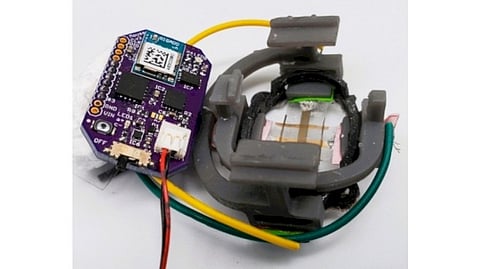

NEW YORK: A team of US engineers has created a small, autonomous device with a flexible sensor that can be adhered to the skin to measure the changing size of tumours below.
The non-invasive, battery-operated device is sensitive to one-hundredth of a millimetre (10 micrometers) and can beam results to a smartphone app wirelessly in real-time with the press of a button.
The researchers from the Georgia Institute of Technology and Stanford University said that the device called FAST (Flexible Autonomous Sensor measuring Tumours) represents an inexpensive, hands-free and accurate way to test the efficacy of cancer drugs.
On a bigger scale, it could lead to promising new directions in cancer treatment.
"In some cases, the tumours under observation must be measured by hand with calipers," said Alex Abramson, first author of the study and now an Assistant Professor at Georgia Tech.
The use of metal pincer-like calipers to measure soft tissues is not ideal, and radiological approaches cannot deliver the sort of continuous data needed for real-time assessment.
On the other hand, FAST can detect changes in tumour volume on the minute-timescale.
"It is a deceptively simple design, but these inherent advantages should be very interesting to the pharmaceutical and oncological communities," said Abramson.
FAST's sensor is composed of a flexible and stretchable skin-like polymer that includes an embedded layer of gold circuitry.
This sensor is connected to a small electronic backpack designed by former post-docs and co-authors Yasser Khan and Naoji Matsuhisa.
The device measures the strain on the membrane and how much it stretches or shrinks and transmits that data to a smartphone.
The researchers said that the new device offers at least three significant advances.
First, it provides continuous monitoring, as the sensor is physically connected to the mouse and remains in place over the entire experimental period.
Second, the flexible sensor enshrouds the tumour and is therefore able to measure shape changes that are difficult to discern with other methods.
"Third, FAST is both autonomous and non-invasive. It is connected to the skin, not unlike a band-aid, battery operated and connected wirelessly," said the study published in Science Advances.
Visit news.dtnext.in to explore our interactive epaper!
Download the DT Next app for more exciting features!
Click here for iOS
Click here for Android